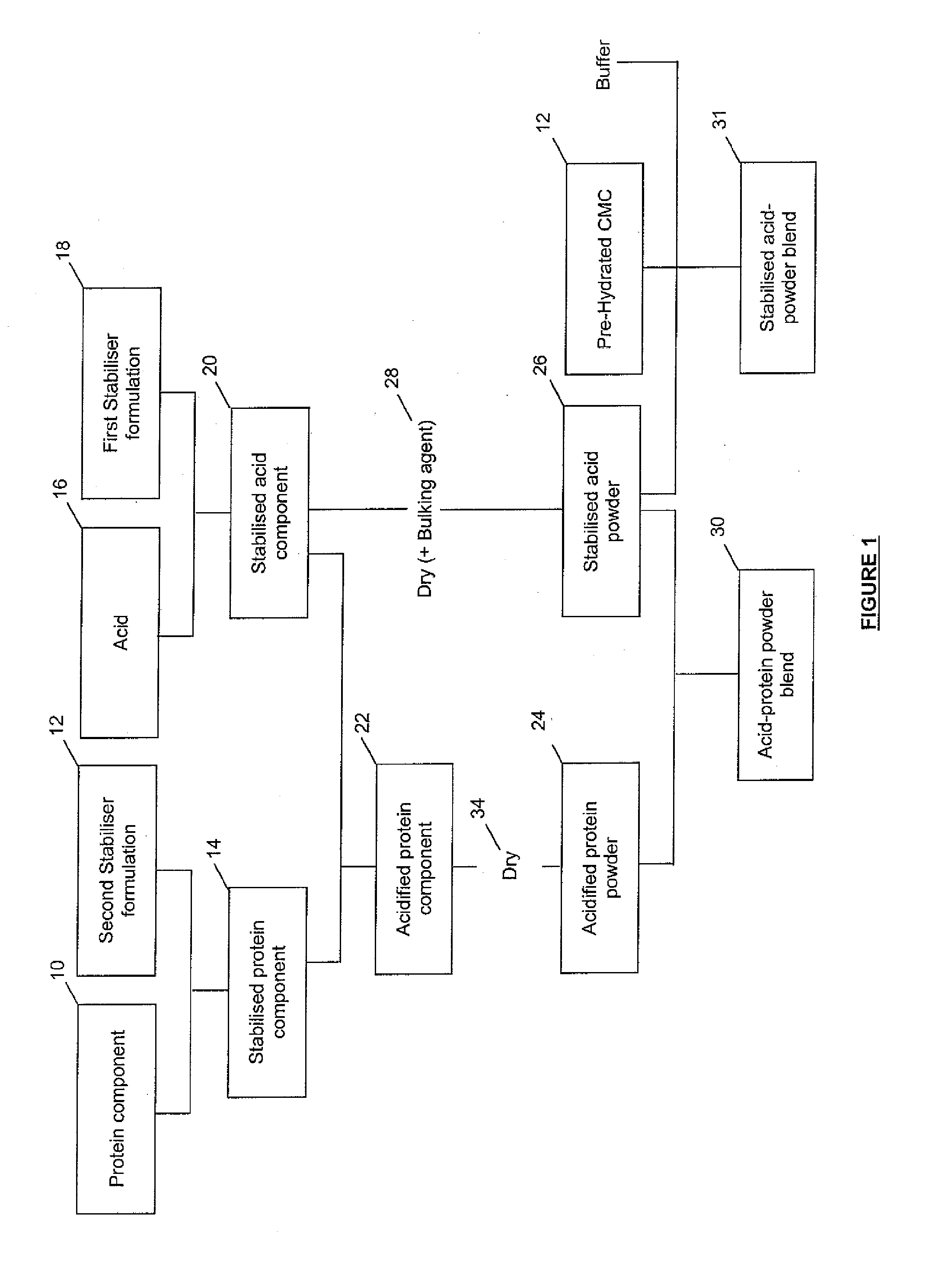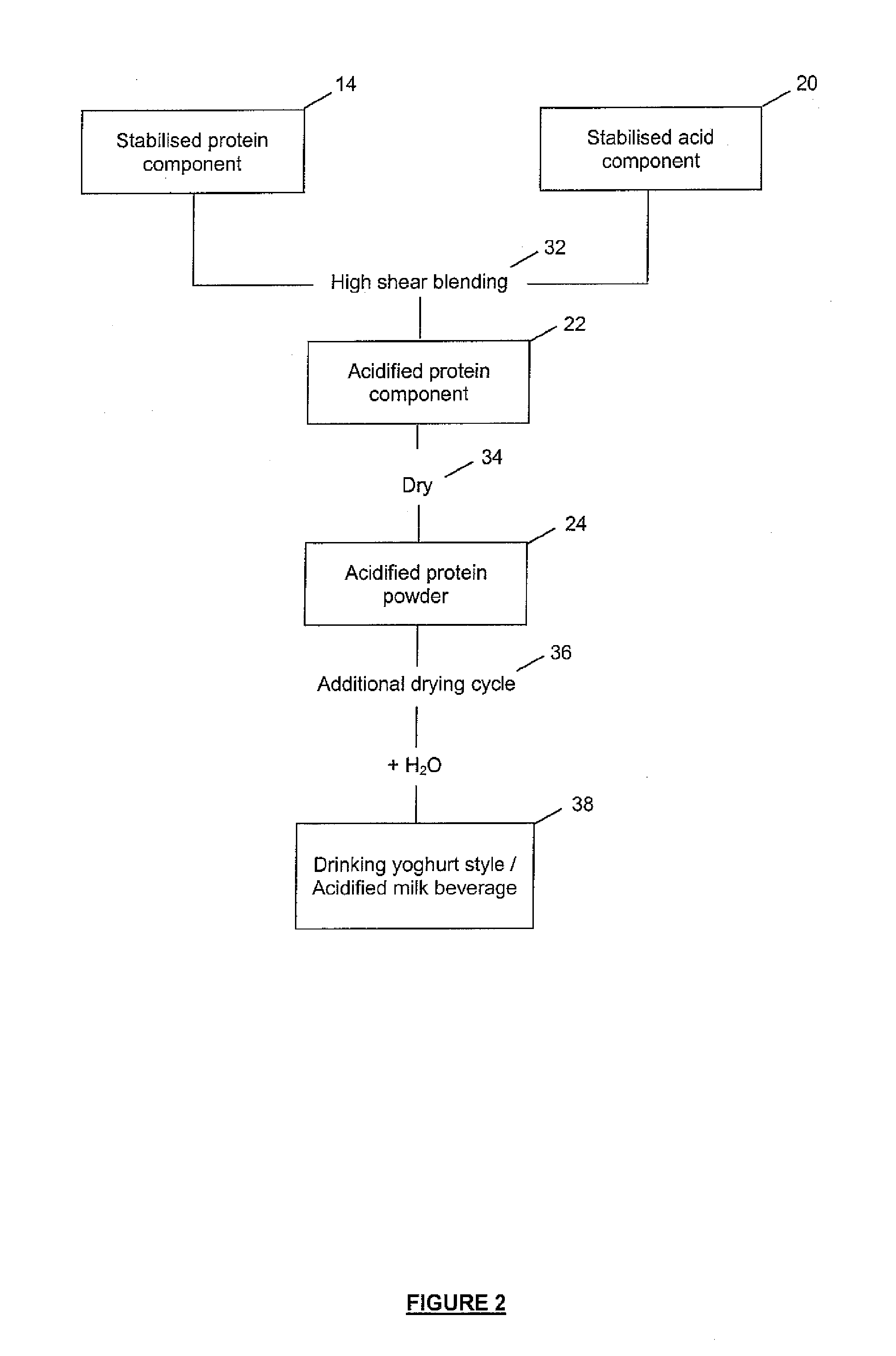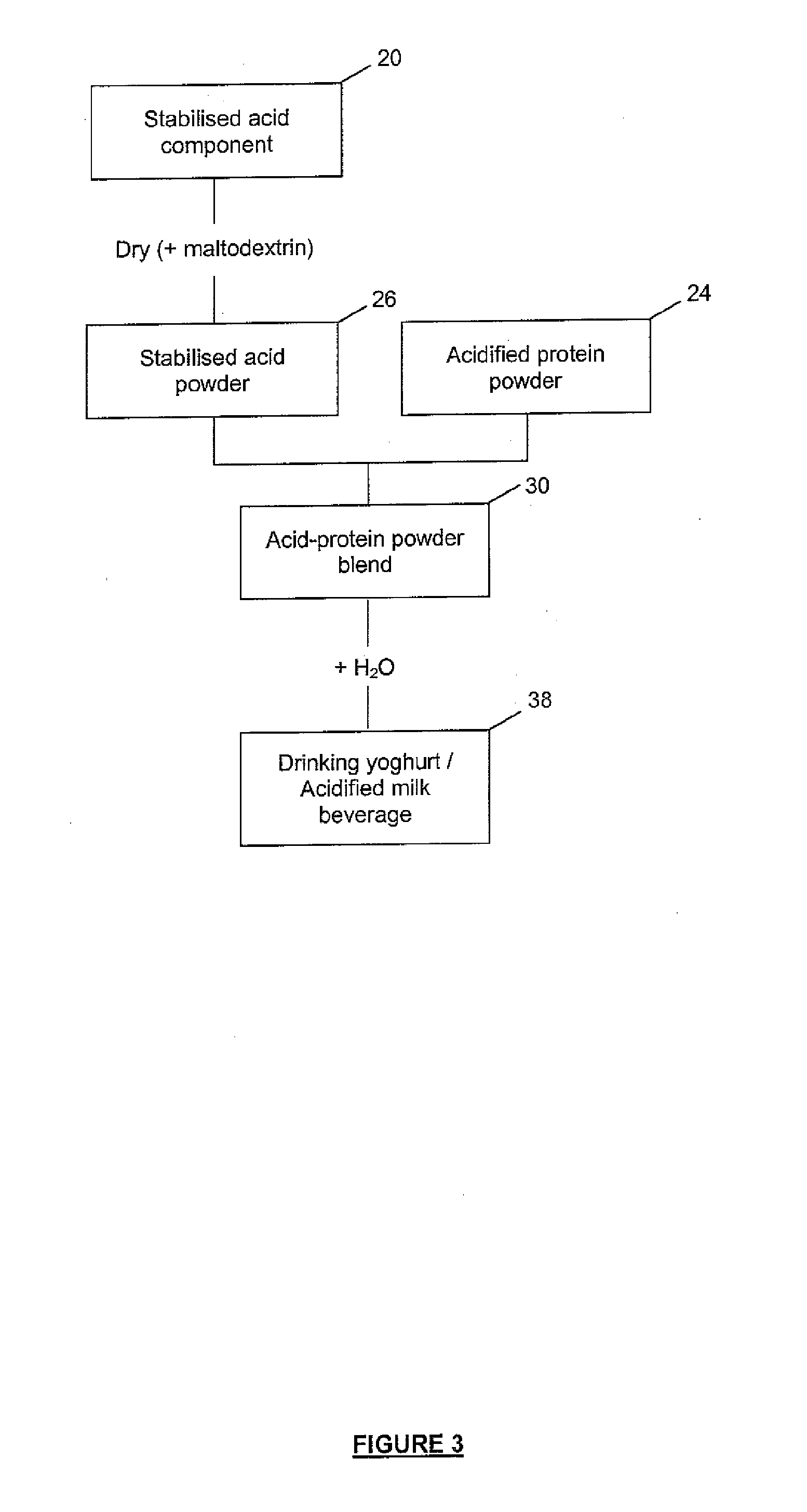Method of Producing Acid Stable Protein Products and Products so Produced
a technology of protein products and products, applied in the field of producing acid stable protein products and products so produced, can solve the problems of low protein concentration of such products, inability to achieve protein concentration, and almost always inability to freeze thaw. good stability
- Summary
- Abstract
- Description
- Claims
- Application Information
AI Technical Summary
Benefits of technology
Problems solved by technology
Method used
Image
Examples
example 1
For Preparing about 1000 ml Ready-to-Drink Beverage
[0124]Acidified milk drink—containing about 120 g skimmed milk per litre or 12% skim milk.
[0125]Preferred pH value between 3.9 to 4.2
StabilisedStabilised AcidAcidifiedproteinComponentProteinIngredients (kg)component (kg)(kg)component (kg)Anti-foam0.00043(Silfoamex 212F 20%)Skimmed Milk Powder0.012000(+−34% protein)CMC (Cekol 30)0.0004800.001920Citric Acid0.002500MonohydrateTri Sodium Citrate0.000375Sucrose0.115000Water0.4500000.450000
[0126]Step 1: Preparing the Stabilised Protein Component[0127]1.1 Dry-blend the 12 g of skimmed milk powder with the 0.48 g of CMC, then add the blend to the water under high shear. Add the 0.375 g tri-sodium citrate to the solution and blend well.[0128]1.2 Allow to hydrate and de-foam for at least 30 minutes.[0129]1.3 Can optionally be homogenized before addition of the tri-sodium citrate.
[0130]Step 2: Preparing the Acid Component[0131]2.1 Dry-blend the 1.92 g CMC and 10 g sucrose. Add the dry-blend in...
example 2
For Preparing about 1000 ml Ready-to-Drink Beverage
[0136]Acidified milk drink—containing about 1000 g skimmed milk per litre similar to drinking yoghurt without the chalkiness.
[0137]Preferred pH value between 4.1 and 4.3.
StabilisedStabilised AcidAcidifiedProteinComponentProteinIngredients (kg)component (kg)(kg)component (kg)Anti-foam0.003583(Silfoamex 212F 20%)Skimmed Milk Powder0.100000(+−34% protein)CMC (Cekol 30)0.0040000.005376Citric Acid0.007000MonohydrateTri Sodium Citrate0.00105Sucrose (Granular)0.100000Water0.4500000.400000
[0138]Step 1: Preparing the Stabilised Protein Component[0139]1.1 Dry-blend the 100 g of skimmed milk powder with the 4 g of CMC, then add the blend to the 450 g water under high shear. Then add the 1.05 g tri-sodium citrate to the solution and blend well.[0140]1.2 Allow hydrating and de-foaming for at least 30 minutes, or optionally pass the slurry through a de-aerator.[0141]1.3 Can optionally be homogenized.
[0142]Step 2: Preparing the Acid Component[0143...
example 3
For Preparing about 1000 g Slurry for Spray Drying
[0148]Acidified milk slurry—containing about +−20% total solids
StabilisedStabilised AcidAcidifiedProteinComponentProteinIngredients(kg)component (kg)(kg)component (kg)Anti-foam0.005000(Silfoamex 212F 20%)Skimmed Milk Powder0.139316(+−34% protein)CMC (Cekol 30)0.0055720.022290Citric Acid0.029024MonohydrateTri-Sodium Citrate0.004353Water0.2528970.542983
[0149]Step 1: Preparing Stabilised protein component 14[0150]1.1 Dry-blend the 139.316 g of skimmed milk powder with the 5.572 g of CMC, into the 252.897 g of water under high shear. Then mix the 4.353 g of tri-sodium citrate in and blend well.[0151]1.2 Allow hydrating and de-foaming for at least 30 minutes, or optionally pass the slurry through a de-aerator.[0152]1.3 Preferably the slurry should be homogenized in one or two stages.
[0153]Step 2: Preparing the Acid Component[0154]2.1 Add the 22.29 g of CMC into the 542.983 g of water under high shear, and then add the citric acid to the s...
PUM
 Login to View More
Login to View More Abstract
Description
Claims
Application Information
 Login to View More
Login to View More - R&D
- Intellectual Property
- Life Sciences
- Materials
- Tech Scout
- Unparalleled Data Quality
- Higher Quality Content
- 60% Fewer Hallucinations
Browse by: Latest US Patents, China's latest patents, Technical Efficacy Thesaurus, Application Domain, Technology Topic, Popular Technical Reports.
© 2025 PatSnap. All rights reserved.Legal|Privacy policy|Modern Slavery Act Transparency Statement|Sitemap|About US| Contact US: help@patsnap.com



